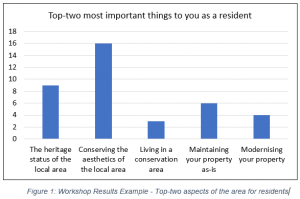
Belper Heritage Site Electric Revolution
Case Study
Project Overview
This work with Belper Clusters Heritage Group explores the provision of EV chargepoints and solar energy generation, situated in the Clusters area. The study of potential installations considered the site’s conservation area and world heritage status throughout as a primary concern, and included visits to the site, direct engagement with the local community, and close working with the client throughout the project.
The Challenge
The Belper Clusters is a community of former mill workers’ cottages, constructed at the dawn of the Industrial Revolution during the 18th and 19th centuries, and the streets and cottages survive to this day with many of their original features intact. To protect the area’s legacy and historical importance, the area has been designated as part of the Derwent Valley Mills World UNESCO Heritage Site.
With growing global pressure to tackle climate change and the ever-increasing rise of new green technologies, the Clusters area felt the need to adapt to this new industrial revolution. Innovation is at the heart of the area’s heritage, and with that in mind, Cenex were commissioned via funding from the RCEF (Rural Community Energy Fund) to undertake a feasibility study to assess how this area (and others like it) can adopt electric vehicle charging and renewable energy generation technologies, while protecting the characteristics most valued by the local community.
The Development
Funded by the RCEF through Nottingham City Council (NCC), this project generated findings specific to The Clusters as well as recommendations and guidance for other communities in similar situations to follow. The potential chargepoint and renewable energy schemes were considered in-light of the area’s Conservation and World Heritage status, and aligned to other elements of the Group’s community projects, including the road renovation, education and outreach programmes, community-led activities, and art projects.
Cenex conducted desk-based research and analysis in three stages, each contributing the evidence required to build a coherent feasibility analysis:
- Technology Study: Desk-based research into available technologies, case studies and funding.
- Community Engagement: Ensure that the wider community is able to input into the feasibility assessment. An example of the results from one of our community engagement workshops is shown in Figure 1 below.
- Scheme Feasibility Assessment: Detailed work on aspects necessary to evaluate the overall feasibility of the scheme.
The Result
Overall, both elements of the scheme were judged to be feasible in off-street situations, and feasible in on-street situations without the integrated solar generation component. The innovative chargepoint suggestion presented will support delivery of the on-street solution, which would benefit The Clusters and create a chargepoint solution for other rural communities.
In both on-street and off-street situations, some risks were identified for mitigation, such as planning permission, landowner permission and lack of specialist skills within the project team.
It was recommended that both aspects of the scheme be taken forwards to implementation as they bring value to the community, potential value to others in similar situations and enhance the wider roads renovation project.
